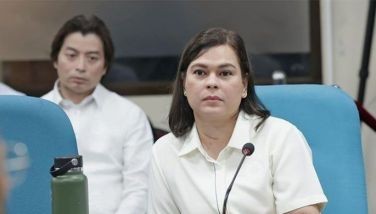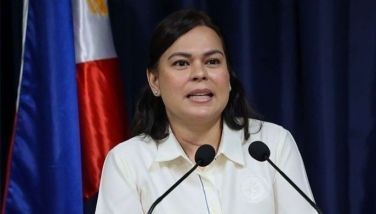Appointment and removal

In our presidential system of government, the authority to appoint is one of the President’s foremost powers. It is exercised either exclusively or with the consent of the Congressional Commission on Appointments (CA) or upon recommendation of the Judicial and Bar Council (JBC).
The President has the power to appoint, with the consent of the CA, the following officials: (1) the heads of the executive departments; (2) ambassadors; (3) other public ministers and consuls; (4) officers of the armed forces from the rank of colonel or naval captain; and (5) other officers whose appointments are vested in him by the Constitution (Section 16, Article VII); (6) the Chairman and Members of the Civil Service Commission (Article IX B Section 1 [2]); (7) Chairman and Members of the Commission on Elections (Article IX C Section 1 [2]); (8) the Chairman and Members of the Commission on Audit (Article IX D Section 1[2]); (9) the regular members of the Judicial and Bar Council (Article 8 Section 8[2]).
On the other hand the President shall appoint only from a list of at least three nominees submitted by the JBC, the members of the Supreme Court, the members of the Court of Appeals, judges of the lower courts (Article VIII, Section 9) and the Ombudsman and his deputies (Article XI Section 9).
Hence, except for the above enumerated positions that require the consent of the CA or the recommendation of the JBC, the authority to appoint “all other officers of the government whose appointments are not otherwise provided by law and those whom he may be authorized by law to appoint” is lodged on the President alone. But Congress may by law also vest the appointment of other officers lower in rank, in the courts or in the heads of departments, agencies, commissions or boards (Article VII Section 16).
It is true that implicit in the power to appoint is the power to remove the person appointed. The power to fire may really be implied from the power to hire. This is a basic and general rule applicable especially to the President as the government’s chief executive. It is essential for a more effective control and for a more productive and efficient performance of the functions of the head of the Executive Branch of the government. The President can achieve more in running the affairs of the State if he has the power to pull out any member of his team who is not playing well or who does not practice teamwork.
But like all general rules, there are exceptions. First of all, the President cannot remove his appointees to the judiciary like the members of the Supreme Court, the Court of Appeals and the lower courts. Their terms are already fixed by the Constitution; and they may be removed only by Congress through impeachment in case of members of the SC and by the SC itself in case of members of the lower courts and their personnel who are under its administrative supervision. This is to insure the independence and autonomy of the judiciary as a co-equal branch of government. Secondly the President has also no power to fire the members of the Constitutional Commissions and the Ombudsman because their terms of office are also fixed by the Constitution and, like the members of the SC, they may be removed from office only on impeachment for culpable violation of the constitution, treason, bribery, graft and corruption, other high crimes or betrayal of public trust (Article XI Section 2).
Hence the President’s power of removal springing forth from his/her power of appointment mainly refers only to officers in the Executive Department, Bureaus, Offices, Subdivisions, Instrumentalities and Agencies of the government, including government owned and controlled corporations with original charters all of which are under his/her control and supervision (Section 17, Article VII).
But since these positions are within the scope of the civil service (Section 2[1] Article IX B), the President’s power of removal is also subject to some limitations. Section 2 (3) Article IX B of the Constitution says that “no officer or employee of the civil service shall be removed or suspended except for causes provided by law” The causes for removal depend on the kind of positions in the civil service.
Appointments in the civil service may be appointments to competitive positions which must be made according to merit and fitness to be determined as far as practicable through competitive examination; or to non-competitive positions where merit and fitness are determined not by competitive examination since by their nature they are “policy determining, primarily confidential or highly technical” (Section 2[2] Article IX B).
Competitive positions in the civil service may also be classified as career service under the Civil Service Code (P.D. 807) since appointments are based on merit and fitness determined by competitive examinations or mainly on technical qualifications that assure appointees (1) security of tenure and (2) opportunity for advancement to higher career positions.
Non-competitive positions on the other hand are similar to the non-career service under the Civil Service Code where entrance is not based on tests for merit and fitness and where tenure is limited either: to a period specified by law, or co-terminus with that of the appointing authority, or at his pleasure, or to the duration of the project for which the appointee is hired.
But whether in competitive or non-competitive service, security of tenure is guaranteed in the sense that their right to continue in the position held should not be impaired by any arbitrary action.
Removal or suspension of competitive- career civil servants shall be only for “causes provided by law” which means that they are not only in accordance with the procedure provided by law but also for reasons which the law and sound public policy recognize as sufficient for removal and “substantial in nature directly affecting the rights and interests of the public” (De los Santos vs. Mallare, 87 Phil, 290).
With regards to officials and employees holding primarily confidential position, they continue in office only for so long as confidence in them endures. Hence the termination of their official relation can be justified on the ground of loss of confidence which strictly speaking does not involve removal but expiration of the term of office (Hernandez vs. Villegas 14 SCRA, 544).
These are guidelines that may help the incoming Noynoy Administration when he takes over the helm and bring in a new team. Of course these rules on removal presuppose previous legitimate appointments of officials clinging on to the position. If there is something wrong with the appointments as when they may be considered “midnight”, then the step to take is more of a revocation of the appointment rather than a removal from office.
- Latest
- Trending



























